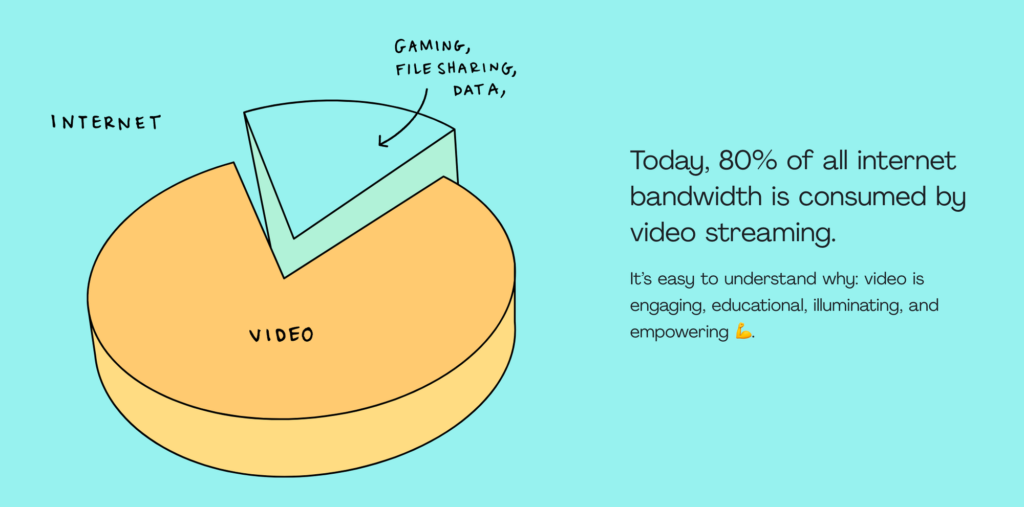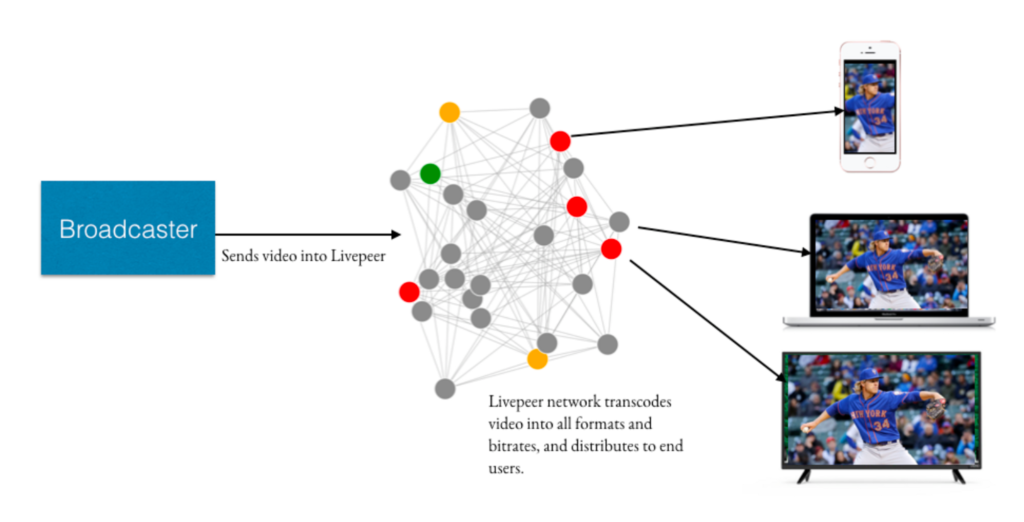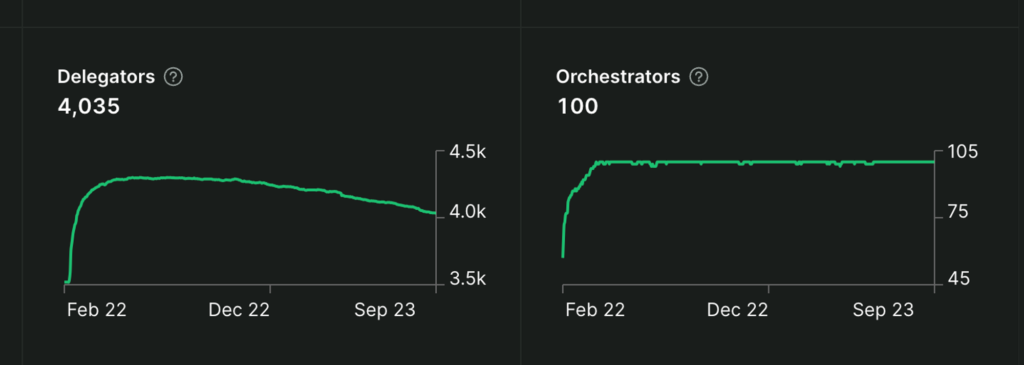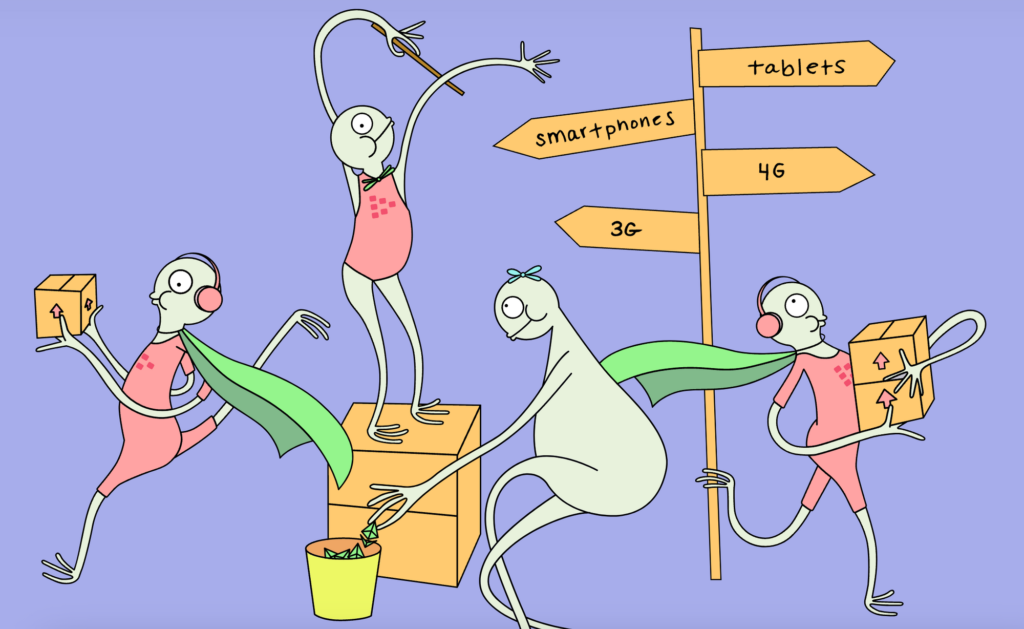Livepeer (LPT): Pioneering Decentralized Video Streaming

In August 2023, Livepeer’s native token, known as LPT, experienced a remarkable 80% price surge. Several factors contributed to this surge, including Livepeer’s utilization as a platform for live streaming the Onchain Summer event, which commemorated Coinbase’s introduction of the Base blockchain. So, what exactly is Livepeer, and how does it function within the streaming media industry? Find out more in this article.
Article Summary
- 📹 Livepeer is a decentralized video streaming platform that makes it easy for developers to integrate live video into their apps.
- 🧑💻 One of Livepeer’s primary functions is as a video transcoding service provider. Transcoding is the process of reformatting videos to suit the user’s bandwidth and device.
- 🤑 LPT (Livepeer Token) is the native token of the Livepeer platform. LPT has several important roles in the network, including incentivizing participants and staking tokens for transcoding work.
- 🧙 There are three important roles in the Livepeer ecosystem: Orchestrator, Transcoder, and Delegator.
What is Livepeer (LPT)?

Livepeer is a decentralized video streaming platform that allows developers to integrate live video within their apps. This platform aims to cut production costs on streaming video applications.
The platform, built on the Ethereum network, functions as a video transcoding provider. Transcoding is the process of reformatting videos to suit the user’s bandwidth and device. It enables viewers to watch live streaming video smoothly on their devices.
The transcoding process is costly for broadcasters. For this reason, Livepeer provides transcoding services by utilizing idle GPU and CPU owners worldwide to become operator nodes.
LPT is Livepeer’s native token with several important roles in this network and can be used as an investment option by investors, including Greyscale. LPT is the third largest token held by Greyscale after BTC and ETH, with a value of 577,119,000 LPT, equal to 3.90 million US dollars (as of September 8, 2023).
In August 2023, the price of the LPT token experienced an 80% increase, rising from 3.97 US dollars to 7.2 US dollars. This increase can be attributed to Livepeer’s collaboration with Base as the live streaming service provider for the Onchain Summer event. Furthermore, Livepeer’s price rise is linked to several other factors, including updates to its roadmap. These updates encompass Livepeer’s integration with prominent streaming video platforms like Youtube and Twitch, the introduction of the Livepeer SDK for developers, and the launch of the Livepeer marketplace for video transcoding services.
Livepeer was introduced in March 2017 by Doug Petkanics and Eric Tang. Later on, Livepeer launched its main network on the Ethereum mainnet in May 2018.
How Does Livepeer Work?

Basically, Livepeer seeks to connect live video broadcasters (Broadcasters) with video transcoding providers (operator nodes called Orchestrators) through applications built into this platform.
For example, Reyner is an application developer who uses Livepeer in his application to broadcast a crypto asset education seminar event at a university. Then, Ari is the event coordinator in charge of broadcasting the event using Reyner’s app.
When Ari starts recording the event, the app automatically broadcasts live video to the Livepeer network. This network then takes on the role of transcoding the video and converting it to various formats that viewers can access on multiple devices.
Base uses Livepeer for Onchain Summer live streaming events. One of the events was the Onchain Summer Story, which featured Base's lead developer, Jesse Pollak, and Opensea's partnership manager, Tristan Friedman, on August 29, 2023.
For developers who want to integrate Livepeer into their applications, it provides several subscription fee options, which can be seen here.
Three Important Actors in Livepeer Infrastructure

Three important actors run the system in the Livepeer video live streaming process: Orchestrator, Transcoder, and Delegator.
- Orchestrator
An Orchestrator is an operator node that manages video transcoding. It ensures that the Transcoder performs the video transcoding process correctly. In return, the Orchestrator will get ETH or DAI paid by the Broadcaster.
To become an Orchestrator, you have to stake LPT. The more LPT you stake, the more jobs you will do on the network in exchange for a fee.
An Orchestrator also acts as a validator. It ensures proper payment settlement, LPT token distribution, and network security.
- Transcoder
A transcoder is a provider of computing resources (CPU, GPU, and bandwidth) for the node operator (Orchestrator). After transcoding, he sends the video content back to the Orchestrator. In return, he receives ETH fees.
Transcoders often use GPUs to mine crypto assets. They have ASIC devices for video transcoding that often go unutilized. Livepeer allows the use of this ASIC device so that they have additional revenue without interrupting their mining activities.
- Delegator
A delegator is a LPT holder participating in the network. They contribute by staking LPT tokens to Orchestrators they believe are doing good and honest work.
Delegators will be rewarded with LPT tokens in proportion to their stake.

LPT Token
LPT is the native token on the Livepeer platform. It serves as an incentive for network participants. In addition, LPT also functions as a staking token for video transcoding and distribution work.
This platform mints new tokens at the end of a period called ’round.’ Round is measured in Ethereum blocks, where one round equals 5760 Ethereum blocks. On Ethereum, a block is mined on average every 14 seconds, which means one round lasts about 22.4 hours.
The newly minted tokens are distributed proportionally to Orchestrators and Delegators in exchange for their stakes.
This platform implements an LPT inflation system that adjusts automatically depending on how many tokens are staked out of the total circulating supply.
Use Cases of Livepeer (LPT)

Livepeer enables the effortless flow of content from Broadcasters to viewers while ensuring protection against censorship and manipulation. Current centralized video live streaming systems such as YouTube or Twitch have the potential for censorship, data control, and user monetization. Centralized systems also implement inefficient cost structures in terms of service payments.
Here are some use cases of Livepeer as a decentralized video broadcasting protocol:
- Video-on-demand Payment: Broadcasters can charge viewers directly without needing account or credit card information. Viewers pay according to the content they watch.
- Auto-scaling Video Services: Helps developers build video services easily and automatically scale to cope with many incoming viewers.
- Uncensorable Live Broadcast: Prevents censorship in video broadcasts and allows information to reach the public transparently.
- Video-Based dApps: Enables decentralized applications (dApps) to embed live video in their apps without needing a centralized solution or limiting the number of users.
Some applications integrating their systems with Livepeer include Bonfire, Lenstube, Xeenon, LiveSpace, Kavarii, and others.
Livepeer Roadmap
Quoted from Messari, Livepeer has designed a roadmap focusing on closer integration between Livepeer’s transcoding network and the Web3 ecosystem. By 2023, it will introduce various improvements, including enhancing video-on-demand services, reducing latency in streaming services, and introducing a token-gating mechanism to set custom playback policies.
Close collaboration with the Web3 community remains a priority, with the main goal of building applications that will drive the future growth of the Livepeer network.
Conclusion
Livepeer is a decentralized video streaming protocol that integrates live video into applications. It aims to reduce production costs in video streaming by utilizing the Ethereum network.
This platform model has great potential to change the video streaming business landscape. It can open up opportunities for exploring new business models that do not rely on practices such as the sale of user data and ad serving.
References
- Livepeer Team, A 10-Minute Primer, Whitepaper, accessed 7 September 2023.
- Cryptopedia Staff, Livepeer (LPT): Decentralized Video Transcoding Services, Cryptopedia, accessed 7 September 2023.
- Mihai Grigore dan Jennifer Obem, State of Livepeer Q2 2023, Messari, accessed 7 September 2023.
- Andrew Hayward, What is Livepeer (LPT)? Grayscale’s Bet on Streaming Video, Decrypt, accessed 8 September 2023.
Share
Related Article
See Assets in This Article
LPT Price (24 Hours)
Market Capitalization
-
Global Volume (24 Hours)
-
Circulating Supply
-


